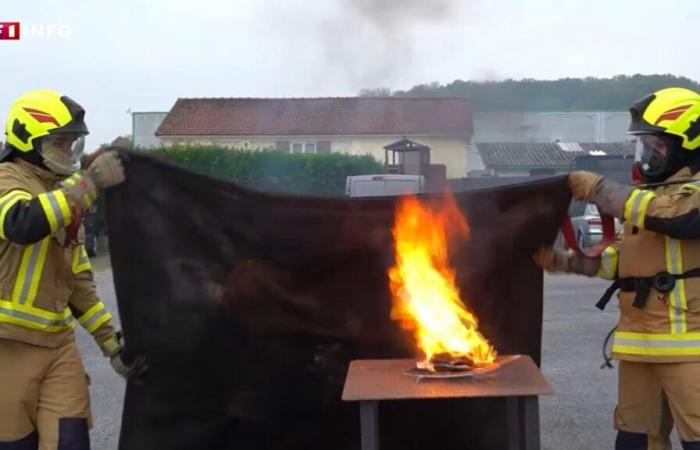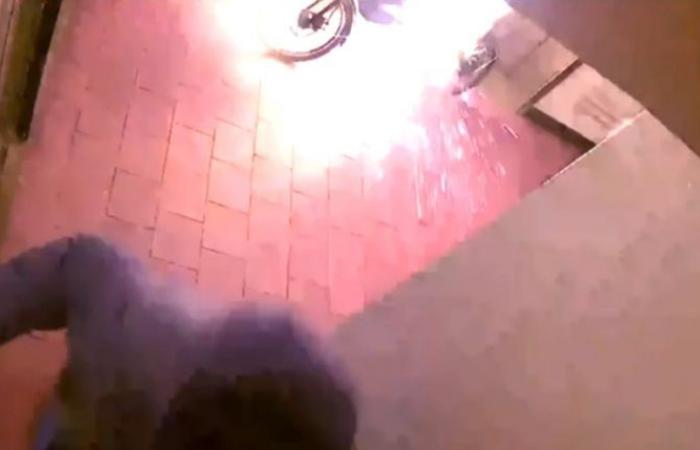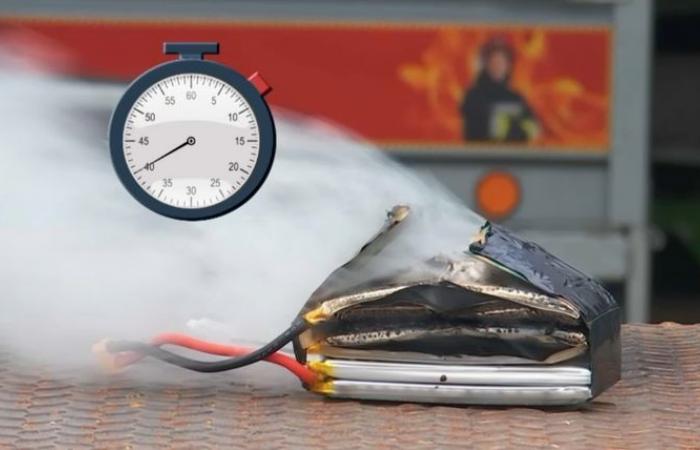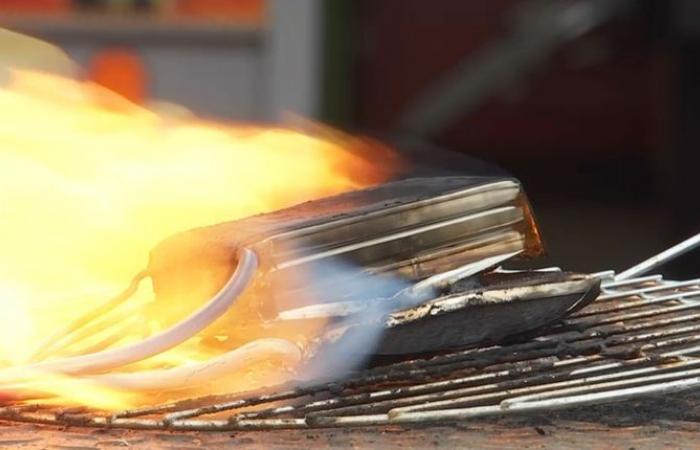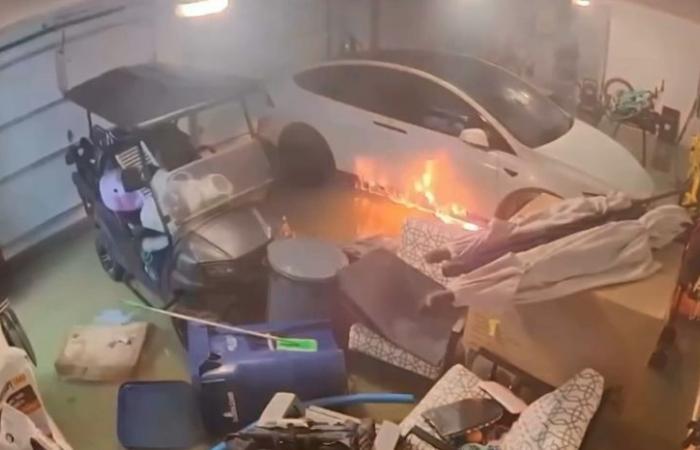Cell phones, cars, bicycles, electric scooters… Lithium batteries are everywhere.
Powerful, compact and resistant, they however have a major flaw.
When they catch fire in the event of impact or overheating, firefighters have the greatest difficulty in intervening effectively.
Follow the full coverage
The electric car, the vehicle of tomorrow?
What is rare is precious… Or terribly dangerous. Now present in many everyday objects, cars, bicycles and other electric scooters, including the essential smartphones, lithium batteries are not rare. But their fires, yes. They occur in the event of shock, overheating, or even a manufacturing defect. And can turn out to be dramatic, as shown by the investigation by the 8 p.m. news on TF1 visible at the top of this article.
Last June, in Dunkirk (North), a scooter battery charging in a child's bedroom caught fire, the flames ravaging the entire family apartment, fortunately without causing any casualties. “As soon as the fireman picked me up, he barely took me down a little and then straight away, everything burst into flames.“, says in our report Timéo, 13 years old, slightly burned on his feet. The family attributes this incident to the poor quality of a battery made in China, purchased online to replace the original.
-
Read also
Fatal fire in Nice: a scooter battery at the origin of the tragedy?
Four months earlier, in London, a CCTV camera filmed the violent explosion of a bicycle left by its owner in a building lobby. Two years earlier, it was an RATP bus in circulation that actually caught fire in the streets of Paris… In September 2024 in Florida, we even saw a car submerged in a flooded garage in Florida catch fire.

To highlight the uniqueness of these fires, TF1 asked firefighters to carry out an experiment: reproduce the phenomenon, in complete safety in an outdoor parking lot, by subjecting a cell phone battery to a significant shock. Result: on contact with air, lithium immediately transforms into toxic gas, spreading in the form of thick smoke for 40 seconds. “Without intervention on our part, the first cell will contaminate the second, heat up and create this chain thermal runaway”explains, on our microphone, Jérôme Engrand, manager of FMS Incendie, a company based in Laigneville (Oise) whose staff is made up of members of the fire brigade.
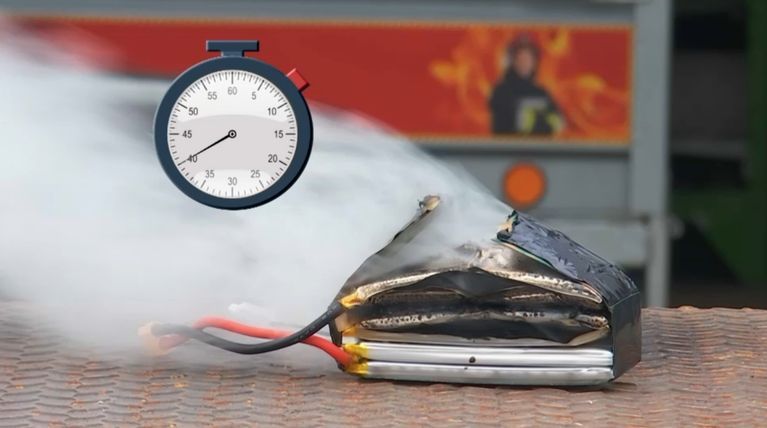
In fact, in front of the TF1 camera, the leak continues, the temperature continues to rise then the entire battery catches fire for more than five minutes. “We see that it is really the gases resulting from combustion which are burning”continues Jérôme Engrand, who recommends, in such a case, leaving the area as quickly as possible by calling for help, without trying to pour water on these flames, which only a thermal blanket can extinguish.
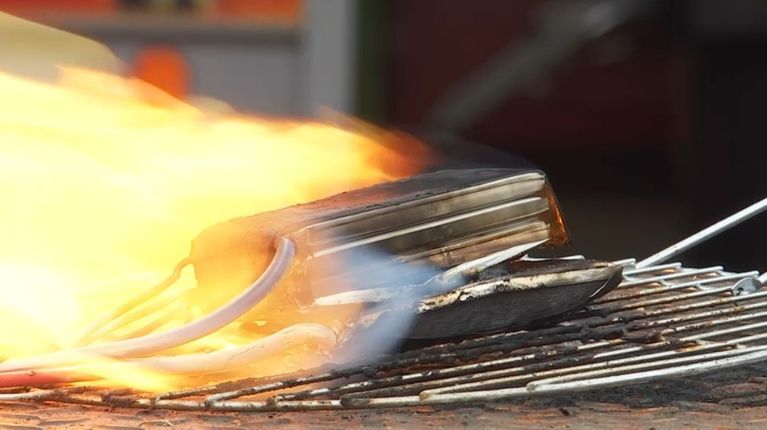

“What we advise you to do is firstly maintain the battery well and check whether the charger is suitable (many of these losses are caused by chargers that are too powerful for the batteries they charge, editor's note) and, if you have no other choice than to recharge in your building or apartment, to do so in a closed room, for example the bathroom, but especially not in the entrance, the only place through which we can go out”adds Jérôme Engrand.
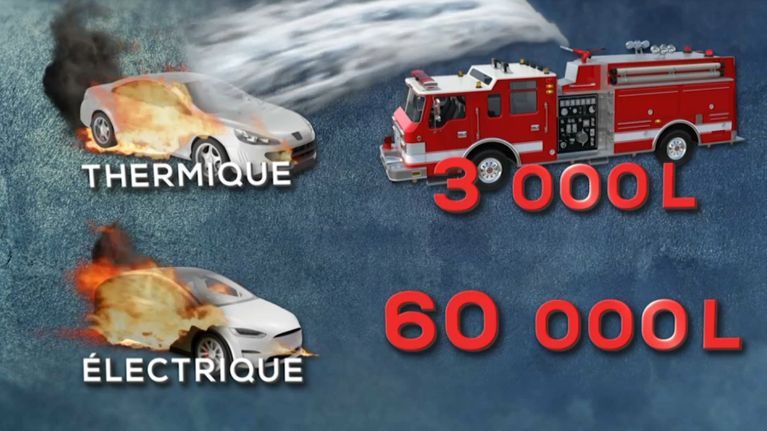
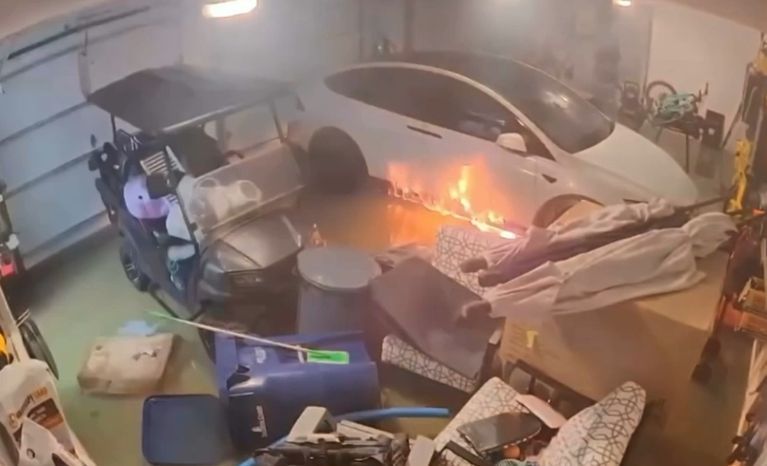
Another headache for firefighters: electric car fires. While a thermal vehicle requires a single intervention truck, or 3,000 liters of water, twenty times more, or 60,000 liters, are needed for an electric car. “We even wonder if we are going to put out the fire. Sometimes, it is better to let the vehicle burn because the water we send is potentially polluted”explains Lieutenant-Colonel Franck Maillard, member of the prevention commission of the national federation of firefighters of France. It happens that it is the contact with degraded water itself that triggers a chemical reaction synonymous with an explosion. In 2023, in the United States, 36 hybrid or electric cars caught fire in Florida during the floods caused by Hurricane Ian.

